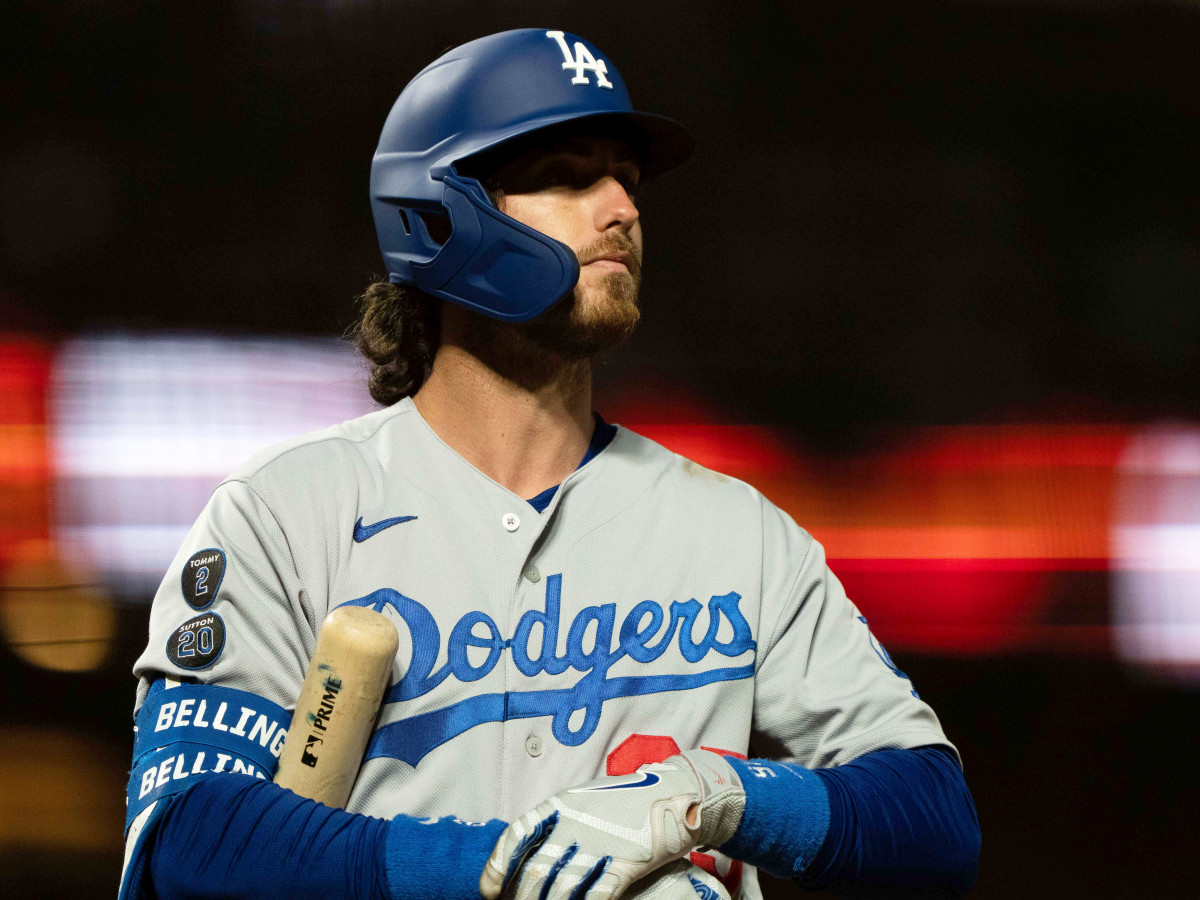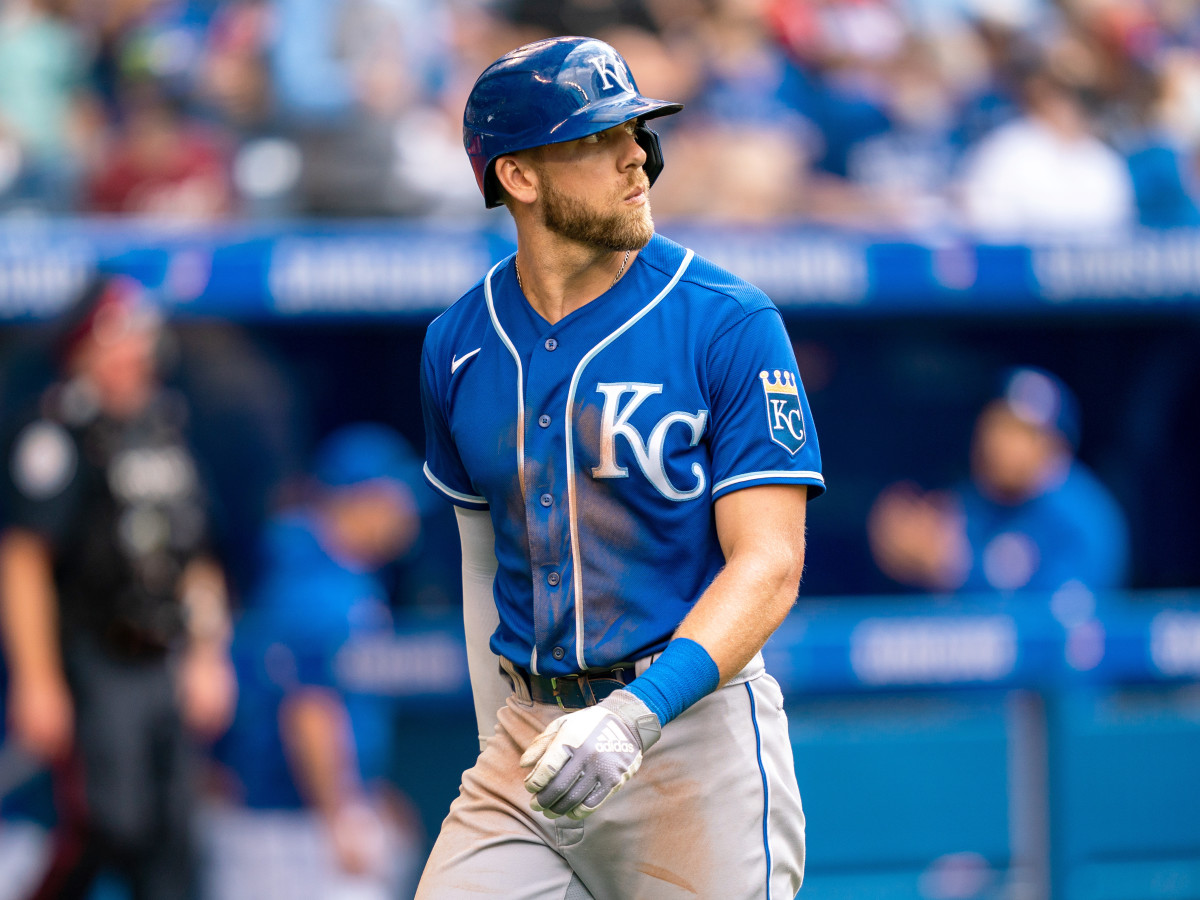Pumpkin Watch: Four Stars Suddenly Sliding Out of the Spotlight

Welcome to The Opener, where every weekday morning you’ll get a fresh, topical column to start your day from one of SI.com’s MLB writers.
Wednesday marks the first day of fall. If you’ve been grocery shopping lately, you’ve probably noticed most stores have already jumped the gun by displaying pumpkins for people to buy more than a month before Halloween. Why they do this year after year is beyond my understanding. But if some people are out there jumping the gun on picking out pumpkins, then so can we, in a metaphorical sense.
Much like Cinderella’s magic carriage eventually turned into a pumpkin at midnight, some stars seem to be nearing the end of their time in the spotlight. Let’s look at a few players who have shown troubling signs of decline this season and could soon lose their grip on the role they’re accustomed to filling.

Cody Bellinger, Dodgers OF
The 2019 National League MVP hasn’t just been one of the worst hitters in the league this season; by OPS, his 2021 campaign is one of the 10 worst hitting seasons by outfielders with at least 300 plate appearances in the live-ball era, which dates to 1920. Bellinger has been the second worst position player in the majors by fWAR (min. 300 plate appearances) and the fourth worst by bWAR (-1.7). He was already relegated into a platoon this summer before recent injuries to Chris Taylor and A.J. Pollock granted him more playing time, which hasn’t helped matters. It’s gotten bad enough that some observers are discussing the possibility of Bellinger being nontendered this offseason.
Some of Bellinger’s struggles can be attributed to the rash of injuries he’s endured since dislocating his shoulder celebrating a home run in the 2020 World Series, an injury manager Dave Roberts has said disrupted his offseason work. Since then, he’s also suffered a fractured fibula, hamstring tightness and a fractured rib, the latest of which he’s pledged to play through for the rest of the year (Update: Los Angeles placed Bellinger on the injured list Tuesday). But the Dodgers have also taken the rare midseason step of reworking his stance and swing, a clear sign they believe this isn’t just about his health, despite Roberts’s insistence to the contrary.
The Statcast metrics are nearly as ominous as the traditional statistics; in two years, Bellinger’s expected batting average has cratered from the top 1% of the league to the bottom 2%. He’s struggled against fastballs, sinkers, sliders, curveballs—you name it. We may very well be witnessing the swiftest, sharpest decline in MLB history, and, considering his age (26), it’s also one of the most surprising. There’s very little statistical evidence out there to support the notion that this is just a string of bad luck from which Bellinger can easily rebound.
Given their status as perennial contenders, the Dodgers can’t afford to let Bellinger work out his struggles for too long at the major league level. At the same time, it’d be somewhat silly for such a wealthy organization to cut bait with a player who’s flashed the sort of star power he’s showcased—especially when it’s a guy who came up with several clutch plays en route to a World Series title, including the game-winning home run in Game 7 of last year’s NLCS. With his salary set to increase only marginally from its current $16.1 million figure in his second season of arbitration, the Dodgers will likely bring Belli back for one more year and hope a full offseason focused on rebuilding his strength, mechanics and confidence will help rediscover his prior form. While his best days are probably behind him, the range of possibilities for what comes next is expansive. It wouldn’t be surprising to see him make multiple more All-Star appearances or become a part-time player in Los Angeles’s stacked outfield going forward.
Watch MLB games online all season long with fuboTV: Start with a 7-day free trial!
Jackie Bradley Jr., Brewers OF
Bradley has never been seen as a bat-first player, but I think many underestimate just how low his floor is on offense. The only full-time outfielder with a worse OPS than Bellinger this year is JBJ, who’s carrying the lowest OPS among outfielders with at least 400 plate appearances during the live-ball era. What’s even more extraordinary is that in 2014, Bradley’s first full season, he recorded the third-worst OPS among outfielders with that many PAs over that span. Only one other player appears in the bottom 10 twice: Paul Blair, an eight-time Gold Glover who in 1975—at age 31, the same age Bradley is now—recorded what is now the seventh-worst hitting season among live-ball outfielders and followed that up in 1976 with the second-worst one. Blair was never again an everyday player.
JBJ is guaranteed another year in Milwaukee with a $9.5 million salary—in addition to a $12 million mutual option for 2023 with an $8 million buyout—so the Brewers are essentially obligated to at least try to fix what’s wrong and be happy the 2018 Gold Glove winner is still an elite defender. While no one could have expected the bottom to fall out so harshly, there were some warning signs that Bradley’s solid abbreviated platform season at the plate last year ahead of free agency was a bit of an anomaly. His 116 OPS+ (league average: 100) in 55 games was the first time he’d registered an above-average mark in that catch-all statistic since his lone All-Star campaign in ’16. Now, in his first season outside of Fenway Park, the 31-year-old has only seven more hits and one fewer home run than he did last year in 199 more plate appearances.
The problem for Bradley appears to be twofold. Firstly, pitchers are now throwing him breaking pitches a career-high 32.1% of the time. JBJ has never quite figured out how to handle those; even last year, he batted just .128 with a .282 slugging percentage against them. The second, much larger issue is that he’s seemingly lost the ability to hit fastballs after thriving against them his entire career. After he batted .377 with a .605 slugging percentage against heaters last year, he’s batting .180 with a .294 slugging percentage against them in 2021. Hitters often find it harder to catch up to fastballs as they age, but that’s as sharp of a drop-off as you’ll find. As a result, Bradley ranks in the 10th percentile of strikeout rate, whiff rate, xBA, xOBP and xSLG.
While it’d be difficult for Bradley to be quite as awful on offense in 2022 as he has been this year, hitters don’t often gain bat speed as they get deeper into their 30s. Brewers GM David Stearns has pushed a lot of the right buttons this season in upgrading Milwaukee’s lineup on the fly, but he may have an expensive fourth outfielder stuck on the books next year.

Hunter Dozier, Royals 3B/OF
Some front offices have managed to agree to extremely team-friendly extensions with players when aiming to buy out their arbitration periods and a free agency year or two. The Braves’ deals with Ronald Acuña Jr. and Ozzie Albies come to mind, as does Kansas City’s pact with Whit Merrifield. However, it seems the Royals are far less likely to extract good value from the four-year, $25 million extension they signed Dozier to in March.
The Merrifield extension, which was inked before the 2019 season, provided a blueprint for the Royals to lock up a late-blooming player who wanted to secure a significant payday despite not being on track to reach free agency until he was several years into his 30s. After Dozier slashed .279/.348/.522 in 139 games in ’19, when he was 27 but still not even eligible for arbitration, he seemed like a potential building block for the next contending team in Kansas City. But he’s since regressed and shown why he was never considered a top-tier prospect.
In 502 plate appearances this year, the 30-year-old is batting .213/.285/.382. That’s a really poor slash line for any batter, but especially one like Dozier who plays in the corners, where some of the best hitters are placed to make up for below-average speed and defense. With his abilities to hit for average and power both greatly diminished over the past couple of years, however, Dozier has exhibited no real major-league-caliber skills. In fact, he’s been the least valuable player in baseball by bWAR (-2.5) in 2021.
Less than one year into his four-year extension, the outlook is blurry for Dozier’s future in Kansas City. He lost his starting job at third base to Adalberto Mondesi at the beginning of this month and has since mostly played in right field to fill the gap created by the Jorge Soler trade. But the team’s No. 6 prospect, outfielder Kyle Isbel, has looked prepared to take over that spot as soon as next year. The same could go for No. 3 prospect Nick Pratto, who’s torn up the top two levels of the minors this year and could take over another potential landing spot for Dozier at first base. Andrew Benintendi already has locked up left field. Executive Dayton Moore has expressed an urgency to return to postseason contention. If he’s committed to making that transition as soon as next season, it doesn’t make sense to grant Dozier a long leash if he starts out cold once again in 2022.
Patrick Corbin, Nationals SP
It’s a good thing the Nationals made the most out of the first season of Patrick Corbin’s heavily backloaded six-year, $140 million contract in 2019 by liberally using him as part of a three-headed pitching troika to secure the franchise’s first championship. Because if the last couple of seasons are any indication, that deal will be an albatross on Washington’s payroll until it expires after the 2024 season.
Corbin has allowed the most earned runs (108) and home runs (36) in the NL this year, which has led to an MLB-high 15 losses and the third-lowest bWAR (-1.8) among pitchers. Only 11 of his 29 starts have qualified as quality starts. The southpaw’s strikeout rate fell off a cliff after the championship parade, going from 28.5% in 2019 to 20.3% in ’20, and it's down even more to 18.2% this year. There’s been no decrease in velocity; in fact, his fastball and sinker have both seen a small uptick in velocity compared with ’19. He’s not getting extraordinarily unlucky on balls in play, either, with a .308 BABIP that’s lower than his career average of .313.
The primary issue seems to be a slider that’s not inducing nearly as many whiffs as it once did. While the pitch’s whiff rate used to hover around 50%, it’s now fallen below 40%. His fastball is generating fewer swings and misses, too, but the slider has always served as his out pitch. FanGraphs’s Devan Fink makes an intriguing case for Corbin extending too much as he delivers his signature breaking pitch. I’m also intrigued by the 150 rpm to 200 rpm decrease in spin rate on both his fastball and slider since ’19.
Some sabermetrics have provided a silver lining for the future. Corbin’s 4.38 xFIP and -0.1 fWAR indicate the 32-year-old shouldn’t be getting rocked as hard as he has been. But it’d take extensive adjustments to get him back to where he was when he earned the win in Game 7 to give the Nationals their first World Series title.
More MLB Coverage:
• Will This Mariners Rebuild Be Any Different?
• There Is Only One Choice for AL MVP
• The Ohtani Rules
• Salvador Perez's Career Year Bucks Trend for Aging Catchers
Sports Illustrated may receive compensation for some links to products and services on this website.
